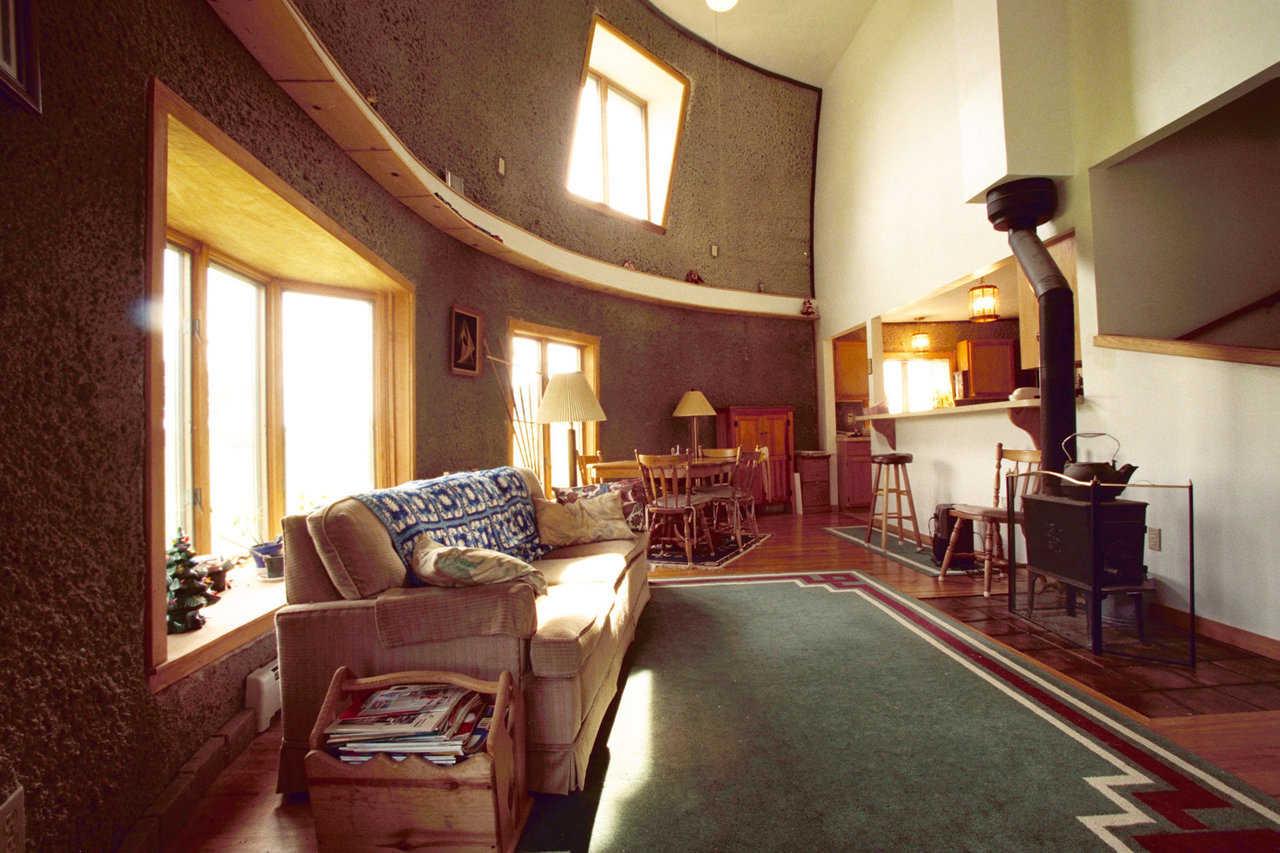A twenty-year dream
You’ve probably heard of a house of cards — one built by stacking playing cards to make a structure. But have you heard of a house built of credit cards?
Figuratively speaking, the Gary E. Clark family of Ann Arbor, Michigan did just that. They built a house of credit cards — or, more accurately, financed with credit cards.
Clark said, “Our dome home was just a twenty-year dream. Then we had our land and design, and we were ready to go.” But instead of breaking ground, the Clarks found themselves looking for a mortgage.
“We had an excellent credit rating,” Clark continued. “Unfortunately, except for one lending institution, we could not get a builder’s loan because the house was a dome, and there was nothing like it in Michigan.”
The one exception they did find proved unacceptable. “They wanted three to four thousand, up front, for the application and appraisal,” Clark said. “Then they wanted eighteen percent interest.”
Creative financing?
The Clarks decided to get creative. “We began collecting all those uninvited credit card applications you get in the mail,” Clark said. “Our thinking was that suppliers and stores did accept credit cards. So we completed the applications and began buying what we needed using credit cards. That gave us an interest rate of twelve to fourteen percent.”
Once the structure was completed, the Clarks discovered that the National Bank of Detroit would give them a “Jumbo Home Equity Loan,” for fifteen years. The home equity loan did not require an appraisal or points to pay, and it carried an attractive 7.85 percent interest rate.
Clark said, “Because the house was in place, we had no problem getting the Home Equity Loan. They didn’t care what shape, size or design it was. So we got the Home Equity Loan and paid off the credit cards.”
A dream come true
The Clark’s two Monolithic Domes — house and garage — stand on 2.2 acres that used to be a cornfield, in a semi-rural suburb of Ann Arbor. The house is a 36’ half-sphere dome atop an 18’ stemwall. A barn roof and solid wood doors give this dome home its rustic or Colonial flavor. Half of the structure’s stemwall, or its lower nine feet, are underground; that half forms the wall of the basement.
The main floor encompasses a thousand feet of living space, shared by a foyer, a great room or combination living and dining area, TV room, kitchen, study and half bath.
“Our great room has three windows and a ceiling, seventeen feet high,” Clark said. “The reaction of first-time visitors always tickles us. They look at the dome’s outside and usually say something like, ‘Well, this is nice. It’s interesting. But why did you build something so small?’”
“Then — surprise, surprise — they walk in,” Clark continued. “Now their reactions reverse. Mouths drop open and they say something like, ‘Wow, this is huge — it’s terrific — it’s wonderful. How did you manage to build something so spacious?’”
Creative and innovative
Impressed as they are with the sheer scope of this main floor, most visitors leave equally impressed by the great room’s beautiful, long, grooved hardwood floorboards, wood stairway, hand-finished stained wood trimmings, and Contemporary Western wood furniture Clark made.
Clark, a believer in creativity, innovation and flexibility when building a dome home, said, “That hardwood cost us only time and energy.” He got his wood by “watching for places being torn down,” going in and offering his free labor in exchange for materials slated for the garbage dump.
The second floor of the Clark dome, in its 721 square feet of living space, includes a master bedroom with an eighteen feet high ceiling, a master bath, a second bedroom and areas for storage and laundry.
A wooden “monk” staircase, standing about a foot away from the wall and following its curvature, leads from the master bedroom to a L-shaped, 250-square-foot study in the third-floor attic.
“It’s called a “monk” staircase because that’s what was used in monasteries,” Clark explained. “It’s like a ladder with alternating wide thread steps. If the bottom thread is twelve inches wide on its right side and 6 inches wide on the its left side, then the next thread up is twelve inches wide on its left and six on its right.
“People love trying it,” he continued “because it looks scary, but is really easy. In no time at all, most folks can go front wards or backwards without a problem. My wife, who is really afraid of heights, uses it all the time.”
Clark found that building codes governing Monk Stairs vary. For example, in Clark’s area, Monk Stairs would not be approved as a main or only stairway to a second floor. They can, however, be used into a loft or attic or as an additional passage to a second floor.
The importance of research and planning
He stressed the importance of researching building codes and planning well in advance of actually building. Clark said, “You better think ahead. That’s real important with a dome. You better decide what windows you want where. A dome structure is so sturdy. You don’t just knock down a wall and make changes.”
The Clarks encountered only one code problem. Clark said, “The engineering plans we got from Monolithic Dome Institute were rejected— simply because they lacked a stamp showing Michigan certification. I called David South. The next day we had a new set of plans with the required stamp and rapid approval.”
A hydronic baseboard or hot water system, running along the floor of all levels, warms the house. The water for this system is heated by a 40,000 BTU boiler in their basement. Clark said that their Heating Engineer estimated their house required a boiler of 17,000 to 18,000 BTU. “But they don’t make boilers that small. We got the smallest and it provides all our hot water needs.”
For emergency use, the house also has a small, 17,000 BTU wood-burning stove that can only burn one fourteen inch log at a time. “But we have never had to use it and really don’t expect to,” Clark said.
“Concrete holds heat, so the hot water system has been sufficient.”
As for cooling, that’s accomplished with ceiling fans and a turbine vent at the dome’s apex which sucks out the rising, warm air. “We don’t like air conditioning, so we did not install an air conditioning system,” Clark said. “The house stays about seventy degrees even during the hottest parts of summer.”
Clark secured the turbine vent onto a square, fourteen-inch window buck that is hinged to the roof, so that it opens like a trap door. This provides an outlet onto the roof. He said, “I use a safety rope or strap like those used for towing cars, that’s anchored inside the house, if I have to get out on the roof.”
The importance of shopping
The house took about eighteen months to build with Gary Clark providing about sixty percent of the construction labor and Gary’s wife, Laura, doing the research and shopping.
“The shopping is really important,” Clark said, “especially when it comes to contractors. Many contractors are afraid to bid because the house is a dome.
“That’s when referrals we got from Monolithic really helped. I tell people to get lots of estimates and bids,” he continued, “because they really vary. For example, one contractor quoted $25,000 plus the cost of the concrete to do our domes. But George Paul from Thermospheric Structures quoted $3,700 plus the cost of concrete for the same job. When my wife first told me that, I was sure she had misunderstood and that price was just a down payment. It wasn’t. It was the total price.”
The Clarks ran into a similar situation for hooking up the boiler. “All the lines were already in and all the parts were already there,” Clark said. “Still, one guy wanted $5,700 dollars for one day of labor — just because it was a round house.”
Despite the frustrations and some goof-ups, Clark said that the cost of building their structures, including land, averaged $55.00 per square foot. With close to 2000 square feet of living space that totals out at $110,000 for a house with a current market value of $250,000.
Monthly operating costs average $57.00 for propane for the boiler and kitchen stove; $40.00 for electricity. For a year of coverage, their home owner’s insurance costs $340.
The Clarks say that the building process was “very trying,” but now that they are in, they love their dome home — a real dream come true.
Note: This article was featured in the Summer 1998 Roundup. Dollar amounts quoted are 1997/8 prices.
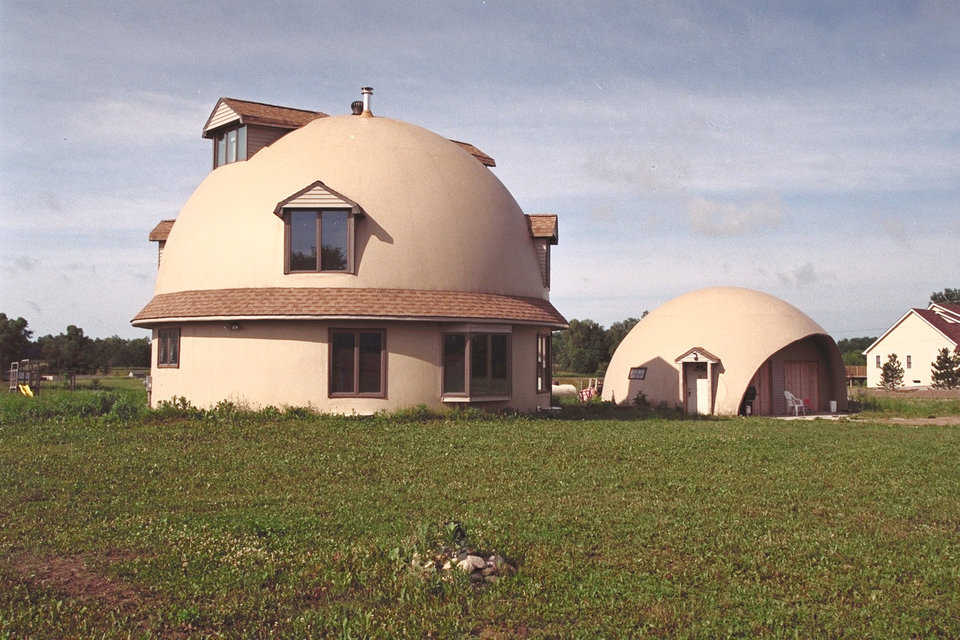
House built of credit cards — The two-dome home of the Gary E. Clark family of Ann Arbor, Michigan is a 36’ hemisphere on an 18’ stemwall, buried 9’ into the ground.
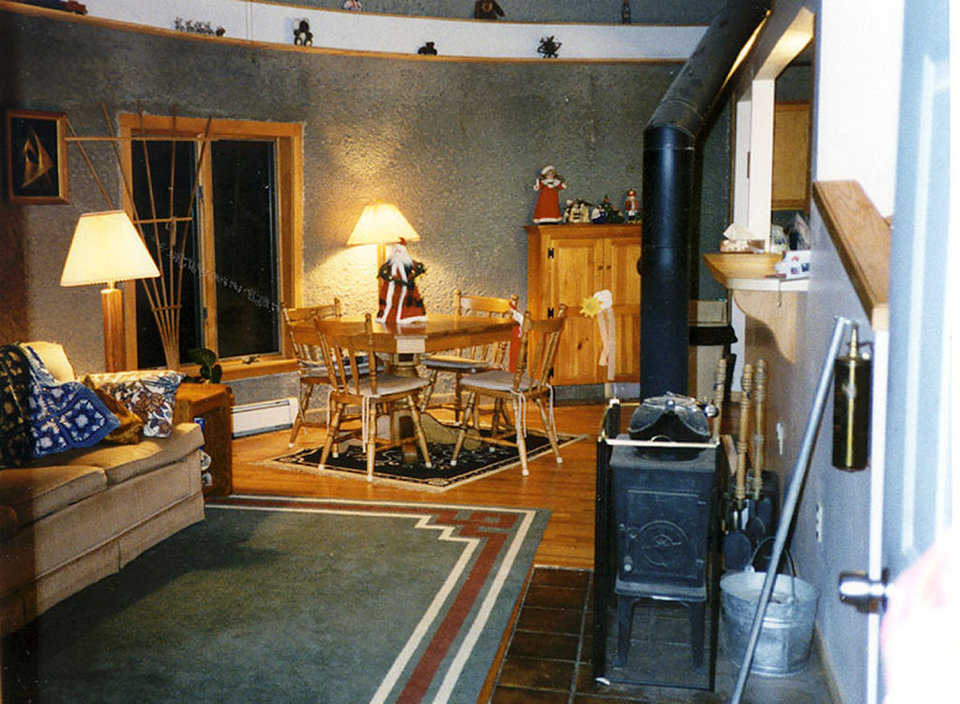
Main floor — It encompasses 1000 feet of living space, shared by a foyer, great room, TV room, kitchen, study and half bath.
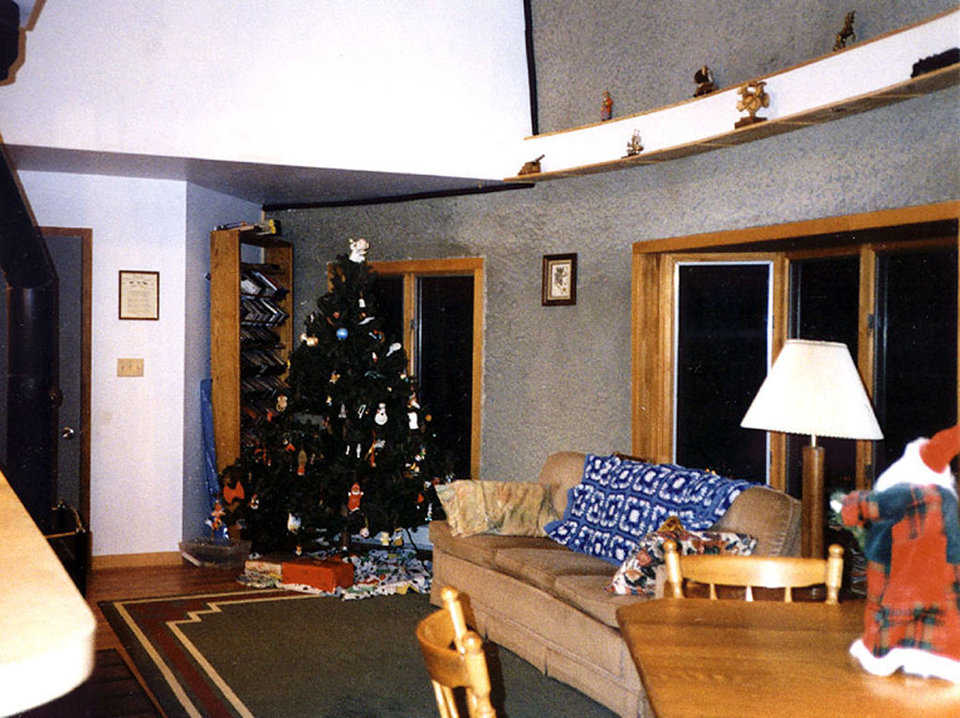
Great room — Three large windows and a 17-foot-high ceiling amaze visitors to the great room.
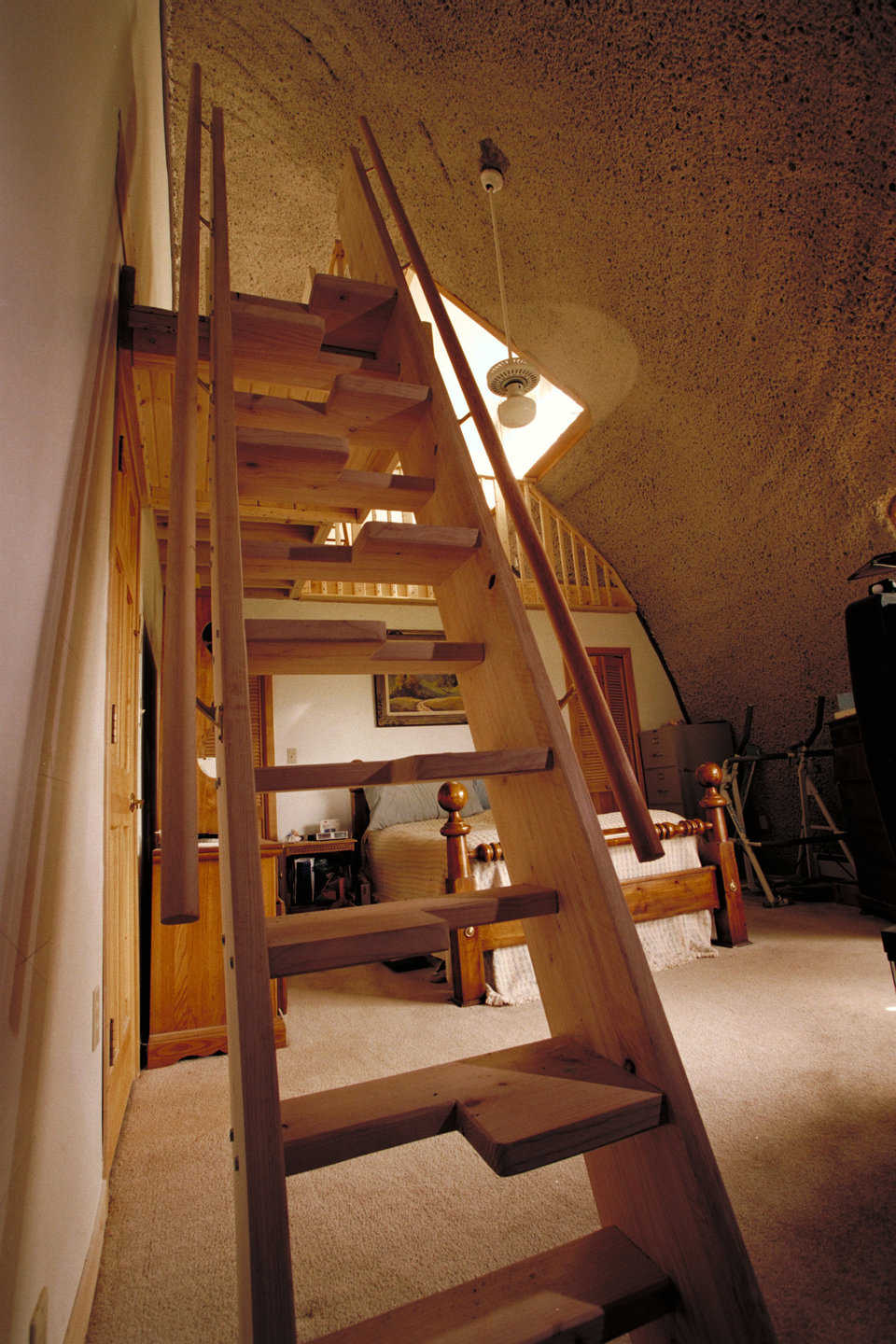
Monk staircase — Width on each step alternates from left to right. This enables the staircase to be much steeper, almost like a ladder, and still “feel” like a regular staircase when climbing or descending.
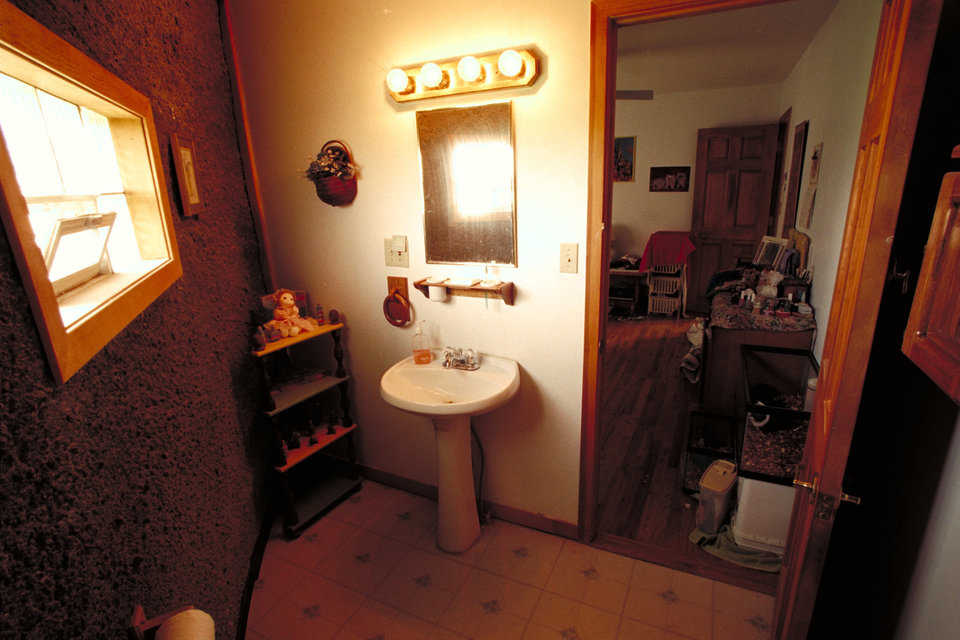
Bathroom — The Clarks utilized space near the dome wall in the bathrooms.
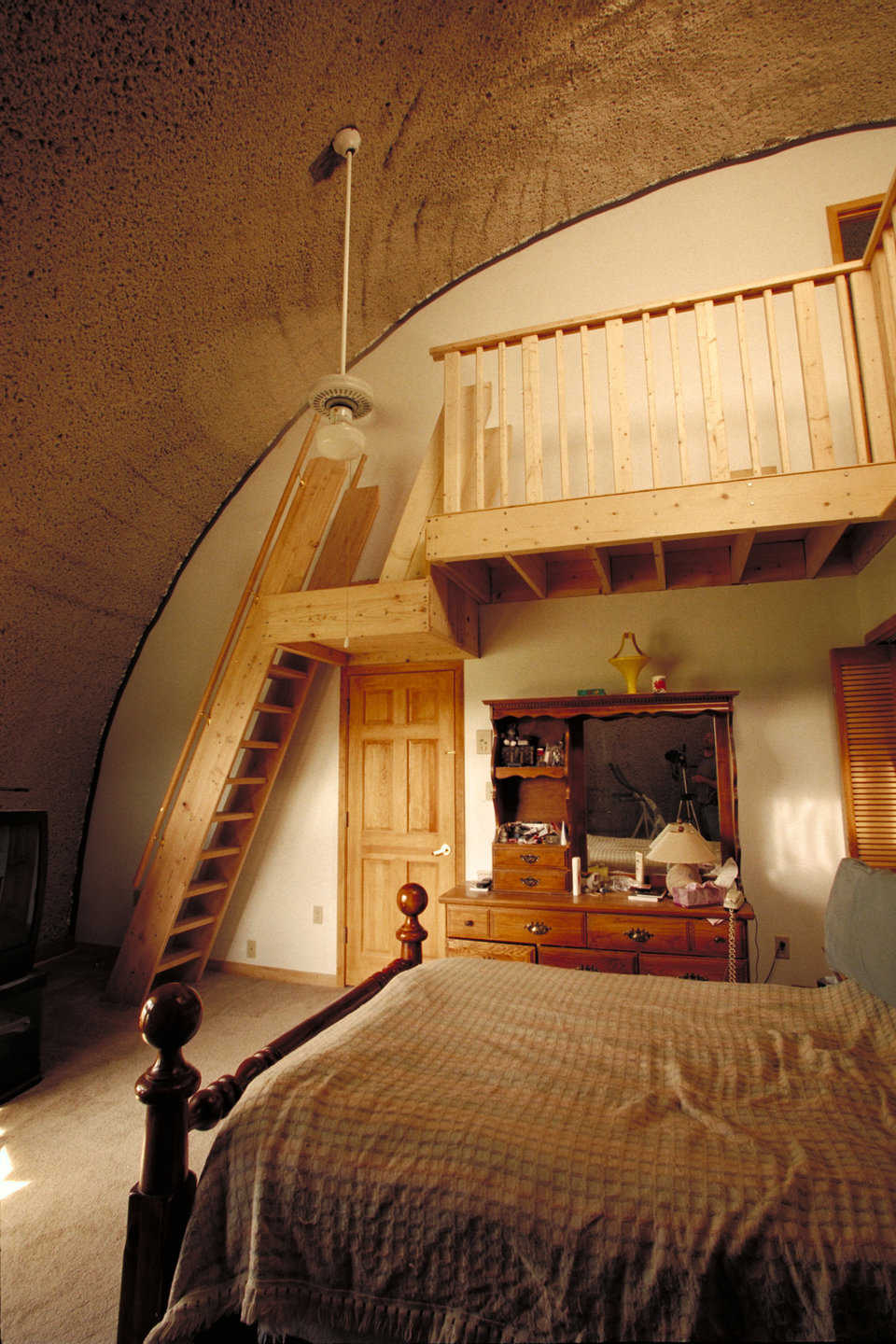
Bedroom — Master bedroom has an 18-foot-high ceiling. A monk staircase leads to a L-shaped, 250-square-foot study.
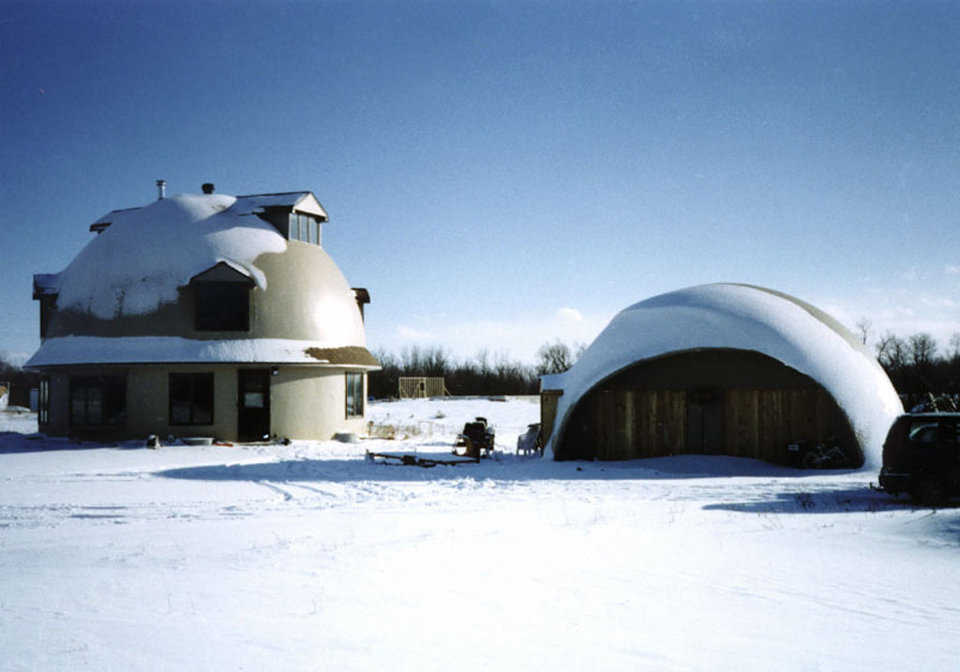
Economical heating — An under-the-floor, hot water system keeps this Monolithic Dome home cozy warm. The hot water comes from a boiler in the basement.
